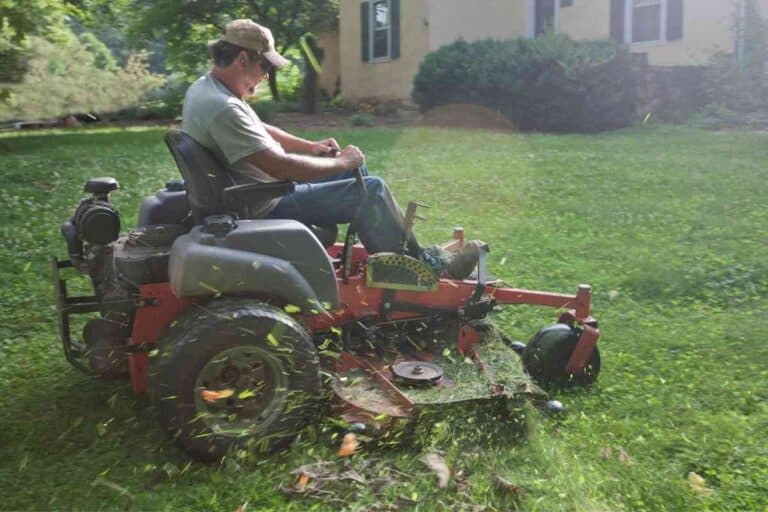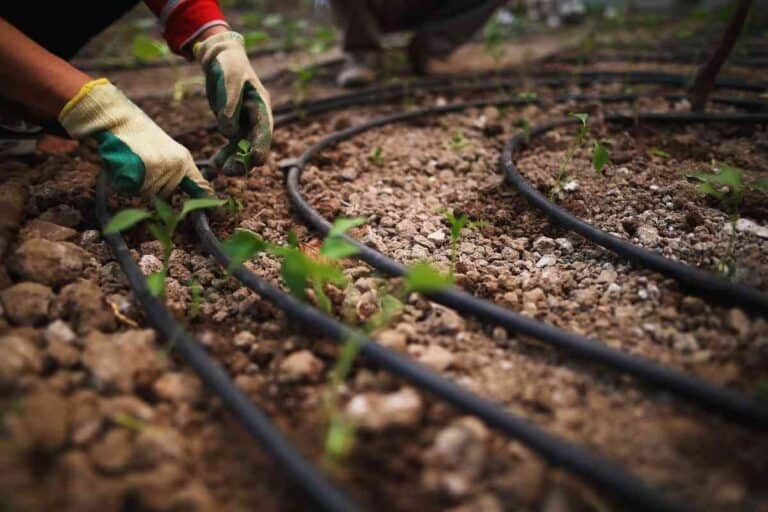Do You Need To Cover Firewood? All Year?
Firewood produces an excellent heat output and burns efficiently if seasoned and stored correctly. So, do you need to cover firewood? We have the answers.
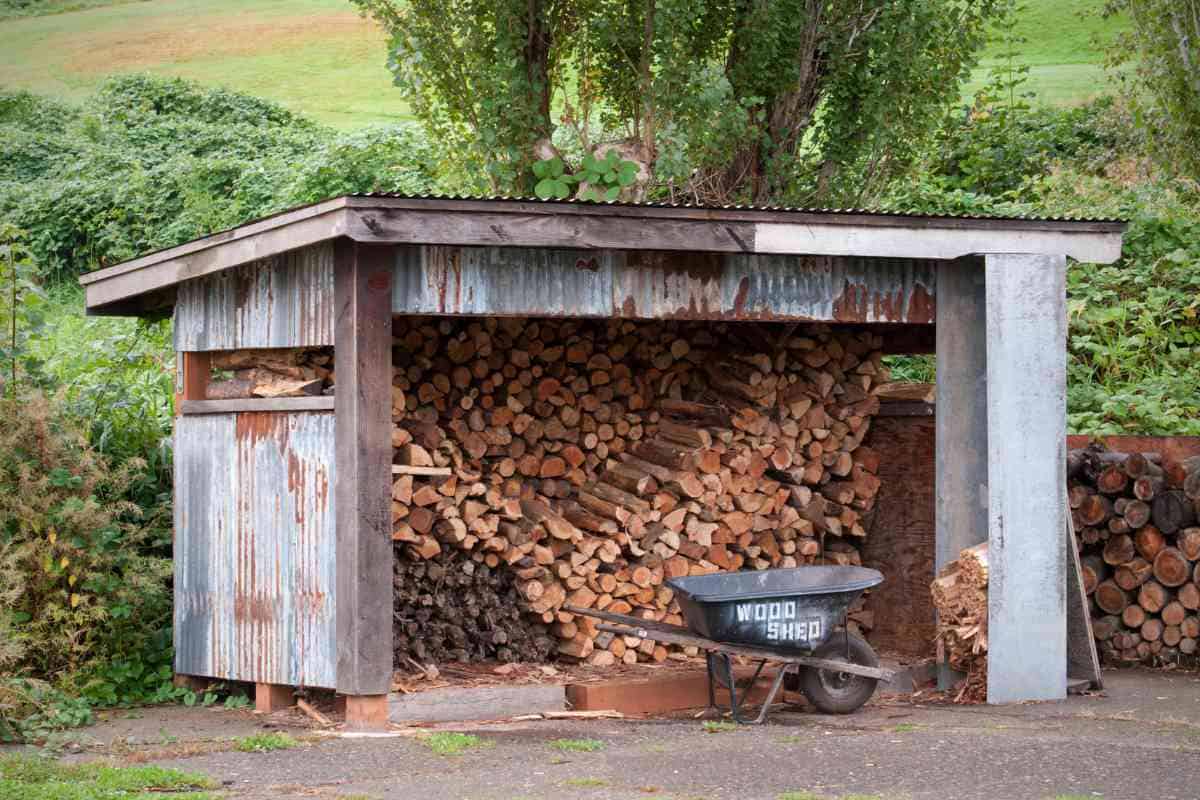
Does Firewood need to be covered?
You need to find a good outdoor spot to put your firewood without covering it so it may dry adequately. However, it is advisable to cover firewood during season to prevent moisture absorption. The cover should prevent moisture from penetrating through the woodpile.
Firewood provides an efficient source of fuel that will help in indoor warming during cold seasons. However, with poor drying, seasoning and storage methods, the firewood will be less efficient than it is.
Typically, firewood is dried and seasoned to ensure it has no moisture content, but if you do not store it correctly, the wood may absorb moisture from the environment. Additionally, poorly stored firewood can attract rodents, termites and other animals that may interfere with your firewood.
Poorly stored firewood can also produce foul odors and decomposition that will make the firewood not burn efficiently.
Therefore, proper storage is required to ensure that the firewood performs effectively and that you do not waste your time and other resources to store the firewood.
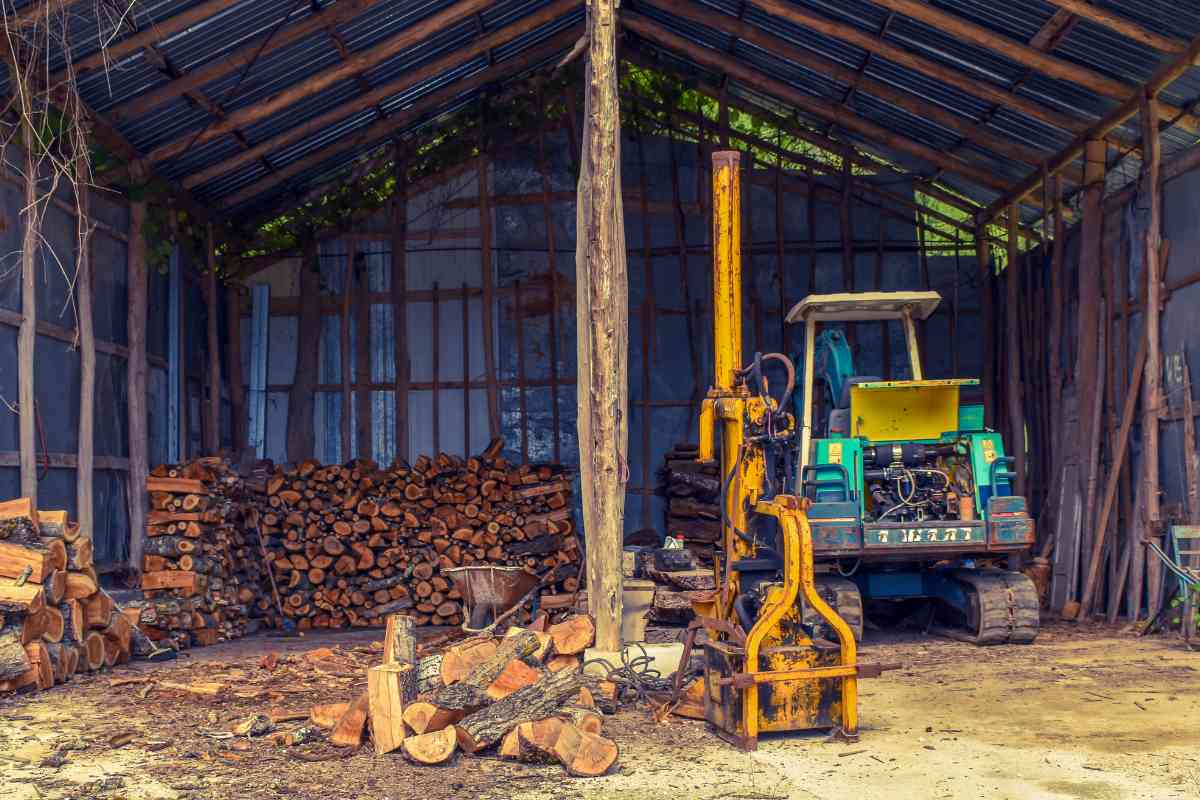
When to cover your firewood
As we discussed earlier, covering firewood will depend on the season. When it comes to the summer season, it is advisable to place firewood without a cover to ensure that the firewood dries quickly.
But, when it comes to winter and rainy seasons, it is advisable to cover your woodpile to prevent water from penetrating the firewood.
Keep in mind that you should only cover the top of the firewood pile to increase air circulation. If you cover the whole wood pile, the firewood may rot and decompose, leading to poor-quality firewood.
What to use while covering Firewood
Choosing a covering material is essential because not all covers will work. When choosing a cover, ensure it does not absorb any moisture or enable water or moisture to get through to the firewood pile.
Having said that, the following are some of the covers you can use to cover your firewood pile:
Firewood Shed
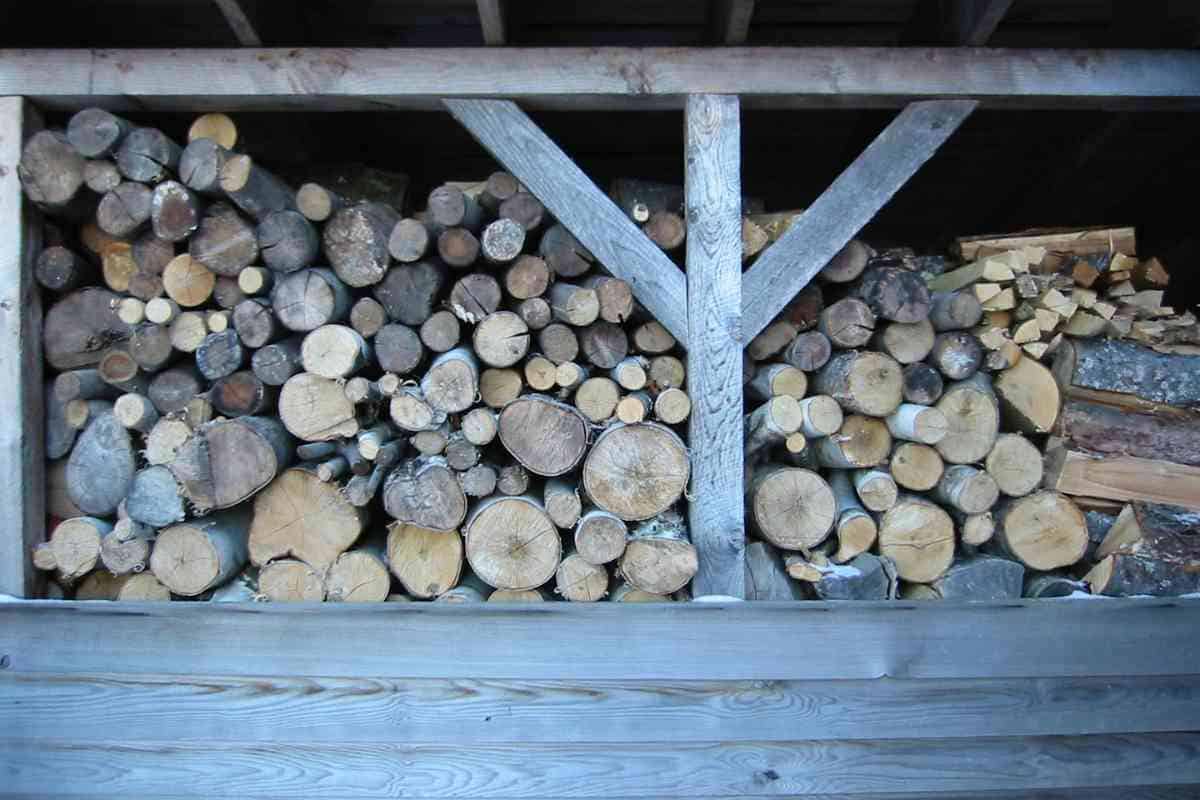
A shed is more convenient and efficient compared to other kinds of coverage if it is during the summer season.
The drawback of using a shed as a cover is that water can penetrate the wood during winter or rainy season since the shed only prevents water from getting into the top part of the firewood pile.
Therefore, if you consider using a shed to cover your firewood, ensure that you do the project in the correct season to avoid disappointment.
The use of a Tarp
Using a tarp provides an affordable and efficient way to cover your firewood. The most significant advantage of using a tarp to cover a firewood pile is that it is made of canvas or plastic material in order to maximize the waterproof characteristic.
The use of a tarp is effective, especially on firewood that is stored outside when it is raining or snowing. The firewood pile is placed on a raised platform when using a tarp.
The best way to use a tarp is to use it from the bottom up side to ensure that air is well distributed throughout the wood pile and that moisture is shielded. Therefore, a tarp provides a simple and affordable way to store firewood.
Other Cover Areas
If you cannot access a tarp or have no shell, there are alternative ways you can use to ensure that the wood pile is in a safe location.
Depending on how much firewood you want and how long the firewood is dried, you can choose other areas such as garages, patios and overhangs.
Additionally, ensure that the coverage areas have enough ventilation and are clean and dry to allow enough air to circulate through the area and prevent any rodents and termites from entering the place.
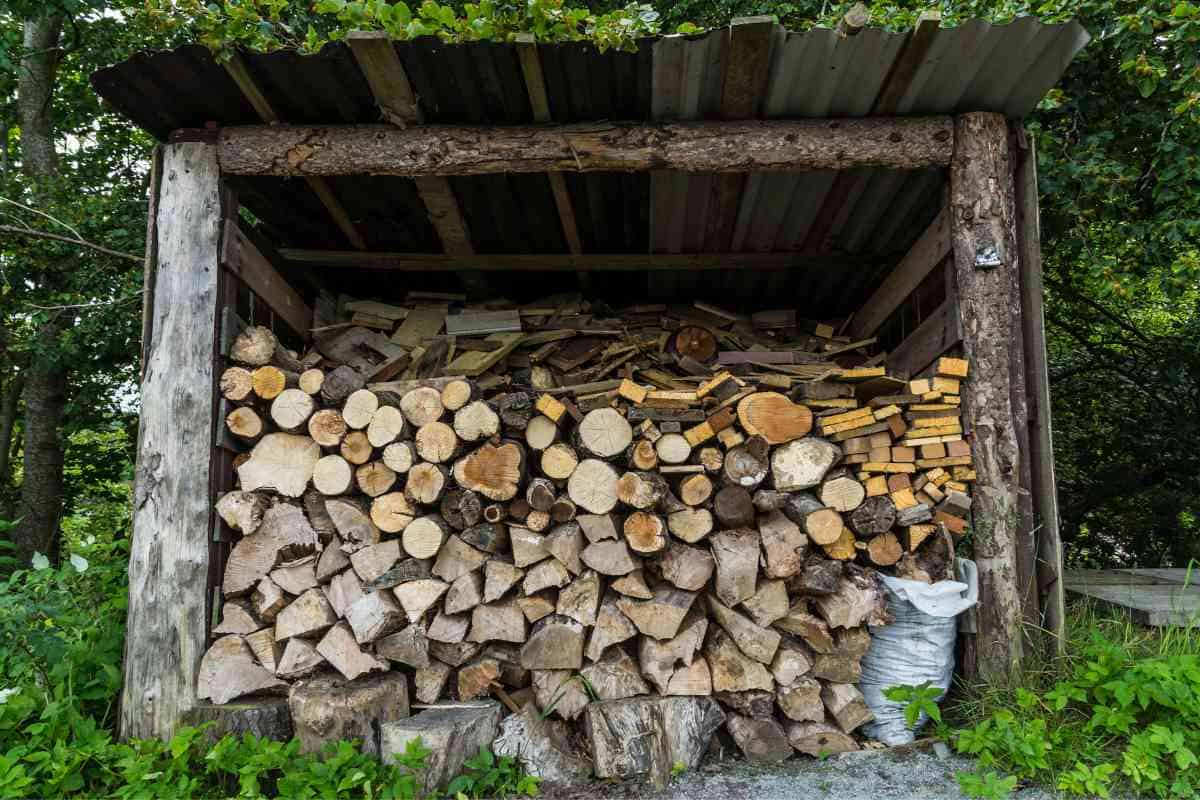
How should you cover a Firewood pile?
As we had outlined earlier, covering a firewood pile will either protect or damage your firewood pile.
Therefore, there is a sure way you are required to cover a firewood pile. Typically, an ideal way of covering a firewood pile is to cover its part to maximize airflow on the sides.
Additionally, if you have a shed, it is advisable to transfer the firewood into the shed to ensure that even the top part dries. If the shade does not provide enough coverage, especially during the winter season, it is advisable to have an additional cover to protect the wood from getting wet.
Cover the top to allow circulation.
Cover just the top part of your firewood stack with a tarp. You don’t need to completely wrap the firewood all the way to the ground on all sides because that is both difficult and won’t help after the rain or snow stops. The purpose here is to allow for drying wind to circulate through your firewood right away after the precipitation stops.
Slant the tarps
The tarp should be set up a bit like a tent, with the tarps slanted and angled to allow the rain – with the end of the tarps at least a few feet away from the base of the firewood. Why? The water will run off the tarp and into the ground, and you don’t want the rainwater to flow back into the firewood.
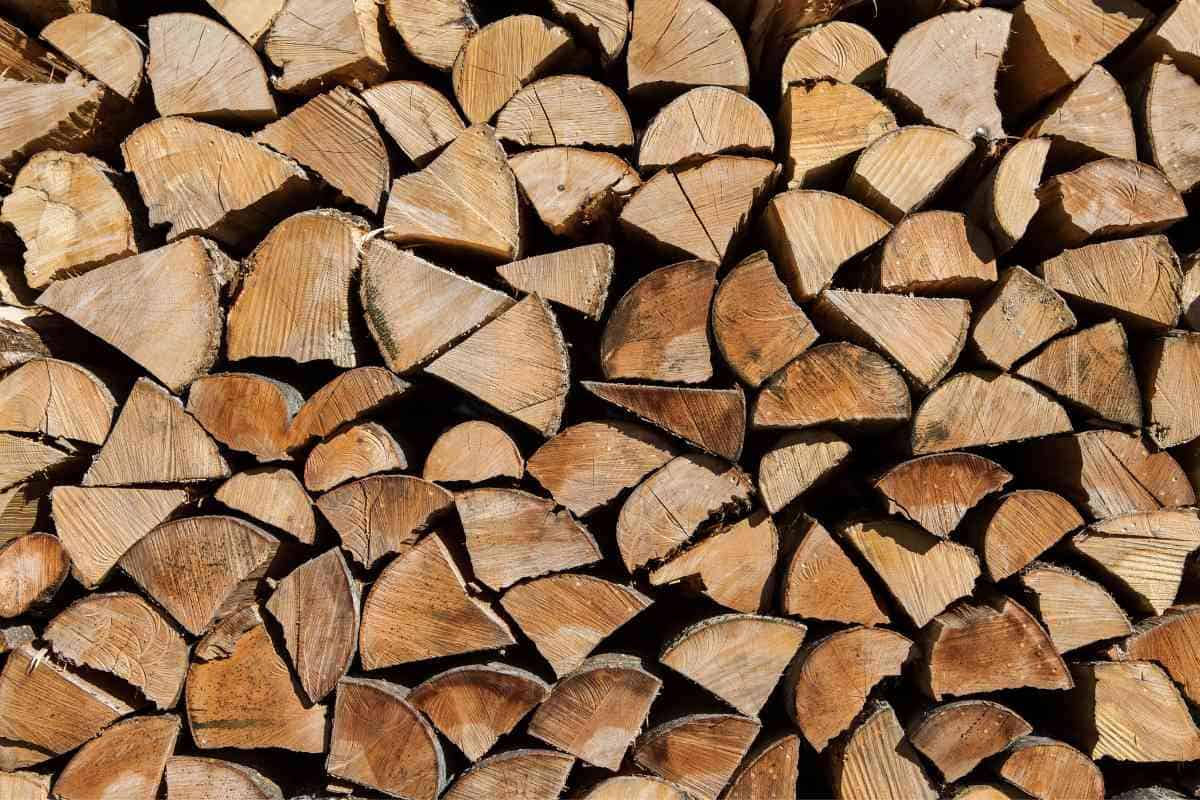
Other Tips on Covering Firewood
Having discussed the efficient covers to use in covering firewood and other fundamentals, you will need to consider the following tips for you to benefit fully from covering your firewood pile:
- Wood curing: if you have green firewood, it is advisable to cure them by storing them for at least 6 months for the firewood to be dry. After that, cover them in shades or tarps, depending on the weather or season.
- Stack firewood in the right way: if you stalk the firewood in the right way, the covering step will be easy. Stacking firewood while leaving space between them is advisable to ensure airflow.
- Store firewood away from other structures: it is advisable to cover and store firewood away from your house and other structures. Typically, the recommended distance should be 20 feet or more.
Why does firewood need circulation?
Whether you leave your firewood completely uncovered or put a tarp or a slanted roof overtop in a bin, the performance of your firewood is helped if it gets some air circulation. The reason for this is that once chopped down, firewood could use some circulating air – whether wet or dry, to allow it to “season”.
Another reason for this is that if you build too tight a container around firewood, it might not dry properly, and ultimately could become soft and rotten which isn’t good for your fire building.
How much work is covering up wood?
Let’s consider some perspectives here: Some people cut and split firewood for use in a fireplace inside, especially during the fall and winter. Others use firewood primarily for bonfires. People can have very different uses for firewood in addition to large stacks that are meant to fuel something for a whole year – or just for a summer.
Covering up wood can take a bit of effort the first try, especially if you have a large amount. If you are using a tarp, it should be pretty easy to throw it over the top and then stretch it across. If you have a huge amount of wood, or consistently need dry firewood, we might suggest building a small shed, potentially without a front door for circulation.
Are there multiple methods for drying wood?
Like many subjects for the outdoors and keeping a home, there really aren’t set rules. You don’t need to cover your wood if you plan to use it right away – but it might help if you receive rain or snow in the days before use. You could also leave your wood unstacked right after cutting it if it’s going to get wet soon.
Make the most practical choice for yourself and your plans – don’t do more work than you need to! Building a shed might be excessive if you don’t use firewood often and even covering your wood might not be necessary for a dry climate that will promptly dry your firewood out with hot air and a breeze anyway.
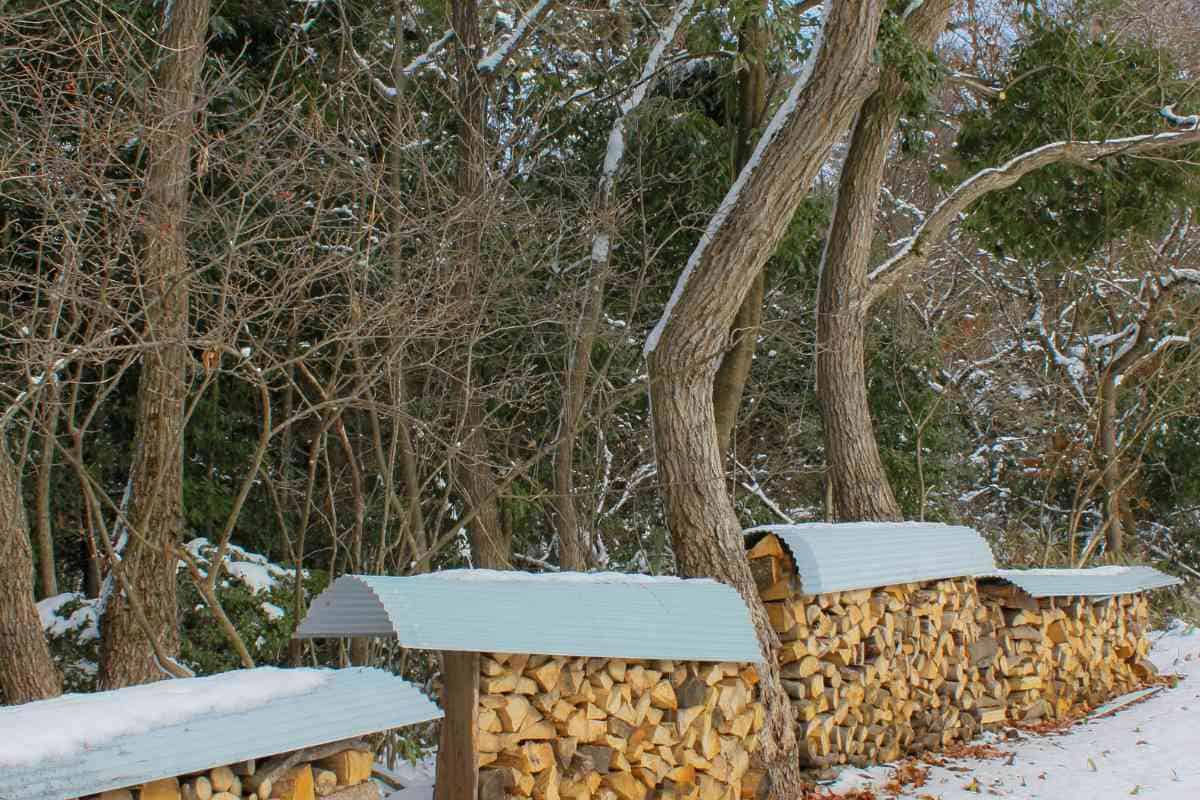
Key Takeaways
- Firewood needs to be covered if there is rain or snow
- Some covers and areas can help to keep firewood dry
- Poor storage can lead to wood rot and the production of foul odors
- Stack firewood while leaving spaces in between them for air circulation
- Before storing green firewood, it is essential to cure them first

